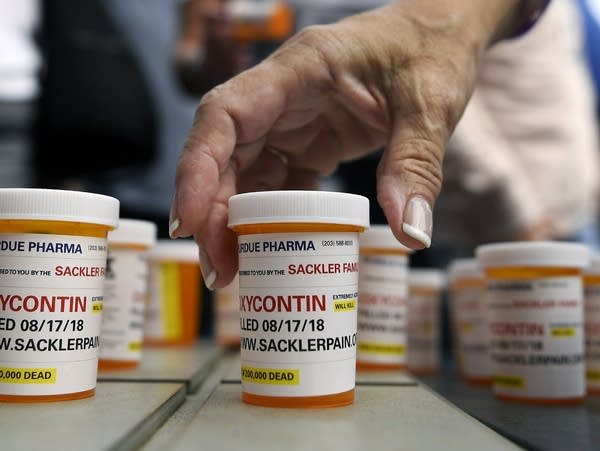‘It’s a big deal’: Opioid prescriptions down in Medicaid and MinnesotaCare
State officials say they’re encouraged by the drop and recommend that people with chronic pain be tapered off carefully

Family and friends who have lost loved ones to OxyContin and opioid overdoses leave pill bottles in protest outside the headquarters of Purdue Pharma in Stamford, Conn., in August 2018.
Jessica Hill | AP 2018
Go Deeper.
Create an account or log in to save stories.
Like this?
Thanks for liking this story! We have added it to a list of your favorite stories.


